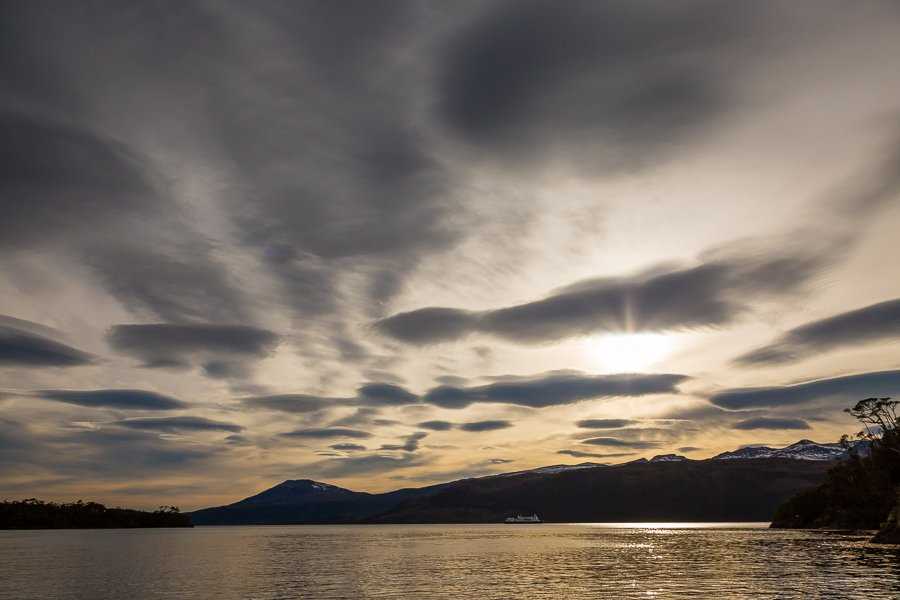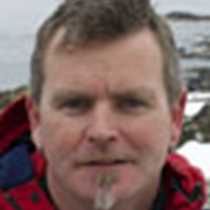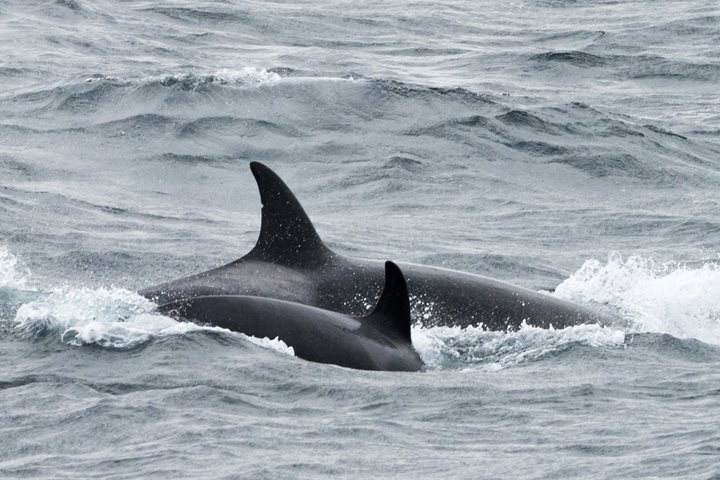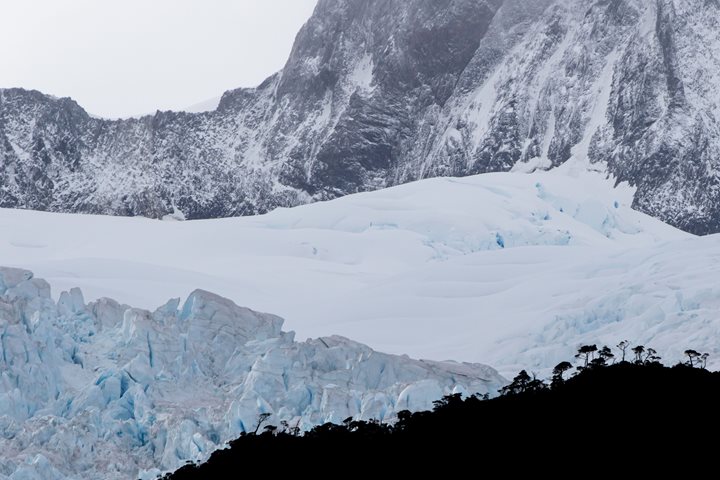The National Geographic Explorer left Puerto Natales in the early hours of the morning, heading towards the Kirke Narrows. Amazing light appeared as the sun rose over the mountains and the moon went down, with almost lenticular clouds hanging over the mountain-tops.
As the flow slowed to just below two knots the captain and the Chilean pilots on the bridge decided the time was right and started to bring the ship in towards the constriction. The clouds were spectacular, as was the scenery, and guests lined the bow and outer decks enjoying the views. Once the ship was through, the Zodiacs returned, and we continued on our way towards the Strait of Magellan.
The clouds continued to increase through the day, and the winds started to rise. It seemed our luck with the last two days of stunning blue sky weather had run a little short. As we navigated the fjords, the wind started to whip up small white caps and black-browed albatross and other seabirds whizzed past. Santiago Imberti gave us a presentation on seabirds, outlining the life histories of these amazing creatures, and showing lots of images of the species we are likely to see over the course of our journey.
Following lunch there was time for a rest, and then Brent Stephenson gave a photo presentation, providing techniques and tips for making the most of photographic opportunities on this expedition. We then broke out into groups for some additional instruction and help with our cameras, from iPhones to point-and-shoots and digital SLRs.
Later in the afternoon we heard an overview about conservation initiatives in Chile, and about the Karukinka Reserve, which is administered by the Wildlife Conservation Society. It was then time for cocktails and a welcome by Captain Oliver Kruess, who introduced the ship, the expedition, and the senior officers on board. Of course, this was followed by a fantastic dinner, and for most an early night, to ready themselves for another action-packed day tomorrow.
As we reached the Kirke Narrows two Zodiacs were sent out to assess the flow through the very constricted area. Slack tide was scheduled to be just after 8 a.m., and so we timed our approach accordingly. The Zodiacs reported back that there was still considerable flow, about 3.5 knots through the narrows, so the ship held off and waited in the main channel until things dropped a little. While we waited several Andean condors and turkey vultures circled overhead looking for their morning snack.







